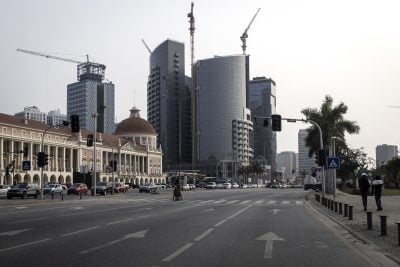Up to the mid-1970s, Tanzania was the largest producer and exporter of sisal in the world and the industry employed over 1m farmers and factory workers.
The crop, which is converted into a fibre traditionally used to produce ropes and twine, was also the country’s highest foreign-exchange earner, generating 35% of foreign exchange and earning it the “green gold” tag. Thereafter, however, production began to decline due to the drop in world prices as synthetic nylon substitutes became more popular.
A further factor in the decline was the nationalisation of sisal estates under the socialist policies of the country’s post-independence government. Production fell from a peak of 250,000 tonnes in 1964, three years after independence, to 32,000 tonnes in 1985.
With many sisal estates abandoned by growers and processing factories operating below capacity, the labour force also dropped to just 100,000 in the main producing regions of Tanga, Morogoro, Arusha, Mwanza and Shinyanga. But now there is glimmer of hope as steps are being taken to revive production and export of the “green gold”.
Professor Godius Kahyarara, director general of the country’s National Social Security Fund (NSSF), recently announced that his organisation had teamed up with Katani Ltd to revive the sisal industry in support of the country’s industrialisation drive. Katani is an independent agro-based company specialising in sisal which was formed as the Tanzanian economy opened up to the free market again in the 1990s.
According to Kahyarara, the NSSF and Katani are mobilising funds from Azania Bank and National Microfinance Bank (NMB) to fund revival activities and mobilising experts from the Small Scale Industries Development Organization (SIDO) and Vocational Education Training Authority (VETA) to design projects that will utilise sisal products for both home and external markets.
The aim here is to support small-scale industries and job creation. The industrialisation project calls for massive production of gunny bags to support production in the export-oriented agro-industries, notably cashew nuts, sugar, coffee, cotton and tea factories. Gunny bags are also in great demand for maize, wheat, rice and other cereals.
Wide range of products
Sisal production is environmentally friendly, as it uses very few pesticides or chemicals, while the fibre itself is biodegradable. Products that can be made from sisal materials range from ropes, twine, and cordage for packaging and baling to carpets, wall covering, doormats, car mats, buffing cloth used for polishing of metal and furniture, fine yarn, bag cloth, padding, mattresses and handicrafts.
Sisal fibre and products have traditionally been exported mostly to the European Union (EU), Russia, Japan, India, China and Pakistan, while new markets recently have recently opened in Saudi Arabia, Iraq and Iran. The domestic and regional markets have not been exploited fully, despite moves by the East African Community (EAC) to increase cooperation and eliminate trade barriers.
New applications for the fibre are causing demand to expand. These include its use in strengthening recycled paper pulp, as a reinforcer for plastic in car interiors, and for roofing materials, piping and fibreboard. An important new development is its use to produce electricity, fuel, fertiliser and animal feed. Only 2% of the plant is used to make the fibre, and the waste has traditionally been used as fertiliser, but now Katani has constructed a power plant at its processing plant in Hale, north of Dar es Salaam.
The plant, which has received investment of $2m from the Common Fund for Commodities (CFC) the United Nations Industrial Development Organisation (UNIDO) and the Tanzanian sisal industry, provides an important step forward in terms of adding more value and sustainability to sisal production. To produce energy, waste is fed into a digester along with cow dung. The resulting biogas can be used as fuel for transport, farm equipment and domestic uses.
A side product is a nitrogen-rich effluent that is used as organic fertiliser and provides nutritious animal feed. There are plans to replicate the project on all five of Katani’s estates and eventually all the sisal estates in the country.
Traditional cash crop
Sisal is the oldest commercial cash crop in Tanzania. The plant, which is native to Mexico, was introduced in 1893, under German colonial rule, by the agronomist Dr Richard Hindorf, who had been seeking a crop suited to the climatic conditions of the Tanga region in the country’s northeast. Export of the plant was banned in Mexico, but Hindorf managed to obtain 1,000 seedlings from dealers in Florida. Only 66 of them survived the journey to Tanga, but the industry took off rapidly.
The country’s warm and semi-arid climate was perfect for the plant and production in the colony grew exponentially. In 1904 some 2,000 hectares of sisal were planted in Tanga and Lindi. The plant’s fibres were mainly used for the production of ropes for the German naval fleet and sacks to export other agriculture products from the colony.
The success story grabbed the attention of the other European powers expanding their navies. The sisal industry grew to become the most extensive commercial agriculture and primary processing industry in East and Central Africa, spreading to modern-day Kenya, Mozambique, Madagascar and Angola.
Sisal was continually produced during the German and the British administrations and was the colony’s largest export, highly prized for use in cordage and carpets worldwide. Following the decline of the industry after independence, Tanzania is currently the second largest producer of sisal in the world after Brazil.
Vision for the industry
The sisal industry vision for Tanzania aims to bring about a massive leap in the production of sisal fibre by 2025. Existing large-scale plantations are projected to produce around five times what they currently produce, while smallholder farms in estates are projected to increase 10 times, and there is a target of 345,000 smallholders producing sisal outside the large estates.
NSSF and Katani executives are optimistic that their joint venture should create around 500,000 new jobs in rural areas, not to mention the creation of those in processing and service industries. The smallholder schemes will also improve the country’s food security, crop diversification and farming systems.
Sisal fields have been found to produce better yields on food crops due to the moisture around the plants. Smallholders are expected to produce food from intercropping with sisal amounting to more than 1,382,000 tonnes, mainly grains and legumes. As a result, the incomes of smallholders are expected to rise from an average of $38 a month to $250 a month.
It is estimated that by 2025 at least 100,000 tonnes of fibre will be needed in Tanzania alone. In the Middle East the increased utilisation of sisal in construction has made the region the second-largest user of sisal fibre in the world. In the Far East, particularly China, imports of sisal fibre have grown significantly in recent years.
Most of it is utilised in new products, such as industrial polishing cloth and composites. Within the African region, there is great potential for growth in demand, with over a billion potential consumers entering the market for more environmentally friendly and newer products such as sisal-based composites.
Lawrence Kilimwiko
Want to continue reading? Subscribe today.
You've read all your free articles for this month! Subscribe now to enjoy full access to our content.
Digital Monthly
£8.00 / month
Receive full unlimited access to our articles, opinions, podcasts and more.
Digital Yearly
£70.00 / year
Our best value offer - save £26 and gain access to all of our digital content for an entire year!
 Sign in with Google
Sign in with Google 


